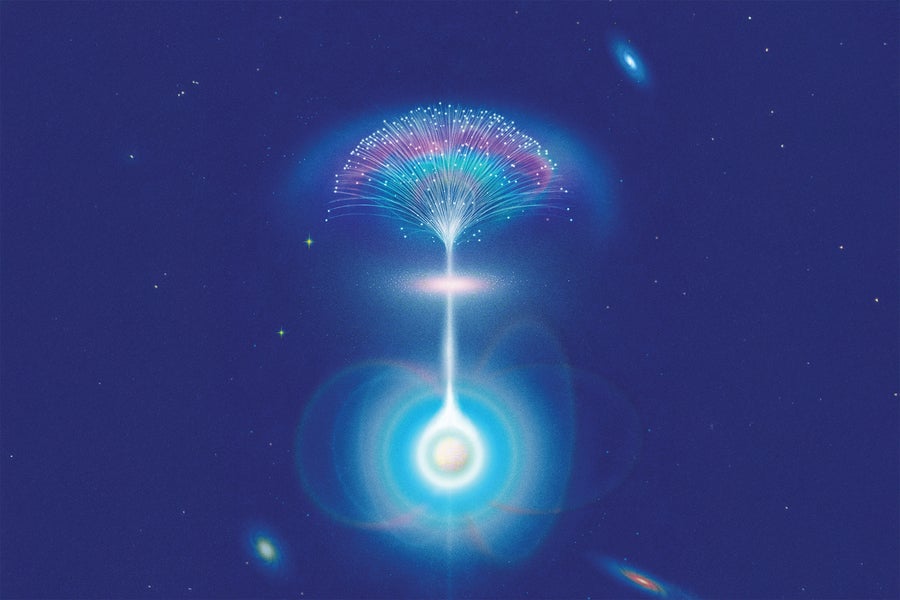Scientists reveal source of mysterious radio signal that travelled for 200 million years to reach Earth
Radio burst lasted just two milliseconds
Your support helps us to tell the story
From reproductive rights to climate change to Big Tech, The Independent is on the ground when the story is developing. Whether it's investigating the financials of Elon Musk's pro-Trump PAC or producing our latest documentary, 'The A Word', which shines a light on the American women fighting for reproductive rights, we know how important it is to parse out the facts from the messaging.
At such a critical moment in US history, we need reporters on the ground. Your donation allows us to keep sending journalists to speak to both sides of the story.
The Independent is trusted by Americans across the entire political spectrum. And unlike many other quality news outlets, we choose not to lock Americans out of our reporting and analysis with paywalls. We believe quality journalism should be available to everyone, paid for by those who can afford it.
Your support makes all the difference.A mysterious radio blast from space detected in 2022 originated in the magnetic field of an ultra-dense neutron star 200 million light years away.
Known as fast radio bursts, or FRB, such brief stellar explosions last just a thousandth of a second but carry enough energy to sometimes outshine even entire galaxies.
Astronomers have detected thousands of FRBs since the first of its kind was spotted in 2007 but exactly how these flares are launched into space isn’t entirely clear.
A new study published last week in the journal Nature focused on FRB 20221022A, a burst discovered in 2022, to find some answers.
Researchers from the Massachusetts Institute of Technology in the US assessed the FRB’s brightness and estimated that it most likely originated from a neutron star’s magnetosphere, the highly magnetic region immediately surrounding it.
The findings are the first conclusive evidence that FRBs can originate from the magnetospheres of such ultra-compact stars.
“In these environments of neutron stars, the magnetic fields are really at the limits of what the universe can produce,” study lead author Kenzie Nimmo said.

Previous studies predicted that atoms would easily be torn apart around such magnetic neutron stars, also known as magnetars.
“There’s been a lot of debate about whether this bright radio emission could even escape from that extreme plasma,” Dr Nimmo said.
“The exciting thing here is, we find that the energy stored in those magnetic fields, close to the source, is twisting and reconfiguring such that it can be released as radio waves that we can see halfway across the universe.”
The new findings also shed more light on the physics driving the FRB, which has been unclear till now.
Some theories suggest that fast radio bursts come from the magnetospheres of compact cosmic objects while others consider them shockwaves from the central object.
In the latest study, researchers considered the scintillation effect that occurs when light from a small bright source, such as a neutron star, filters through a medium like a galaxy’s gas.
Turns out this fast radio burst comes from a region less than 30,000km in size… that’s tiny!! 🤯 read about how we used scintillation to constrain the FRB emission region size at the link below ✨ https://t.co/dMq2AxJkI9
— Kenzie Nimmo (@Kenzie__Nimmo) January 3, 2025
The light tends to bend in ways that make the star appear twinkling to a distant observer. The more distant the object, the smaller it is and the more it appears to twinkle.
Scientists previously examined whether the degree to which an FRB scintillated could help find the size of the region from where the radio signal originated.
The smaller this region is found to be, the more likely the FRB is to have come from a source close to the surface of the star.
When it was detected in 2022, the light signal from FRB 20221022A lasted about two milliseconds with one standout property: it was highly polarised with the angle of polarisation tracing a smooth S-shaped curve.
This special property was seen as evidence that the FRB emission site was rotating — a characteristic of highly magnetized, rotating neutron stars called pulsars.
Researchers then determined that the radio burst originated from a small region just about 10,000 km from the surface of the neutron star.
“That’s less than the distance between New York and Singapore,” scientists said.
“Zooming in to a 10,000-kilometer region, from a distance of 200 million light years, is like being able to measure the width of a DNA helix, which is about 2 nanometers wide, on the surface of the moon,” Kiyoshi Masui, another author of the study, said.
The findings prove for the first time that fast radio bursts can originate from very close to a neutron star, in their highly chaotic magnetic environments.

Join our commenting forum
Join thought-provoking conversations, follow other Independent readers and see their replies
Comments